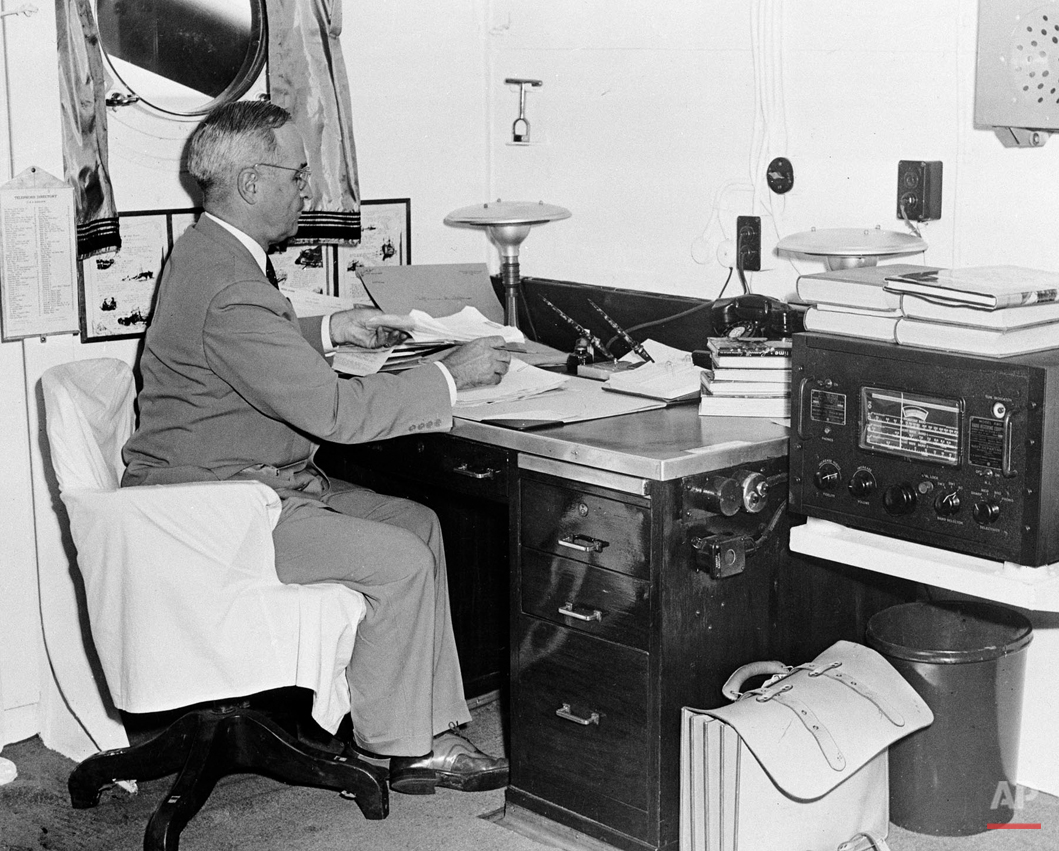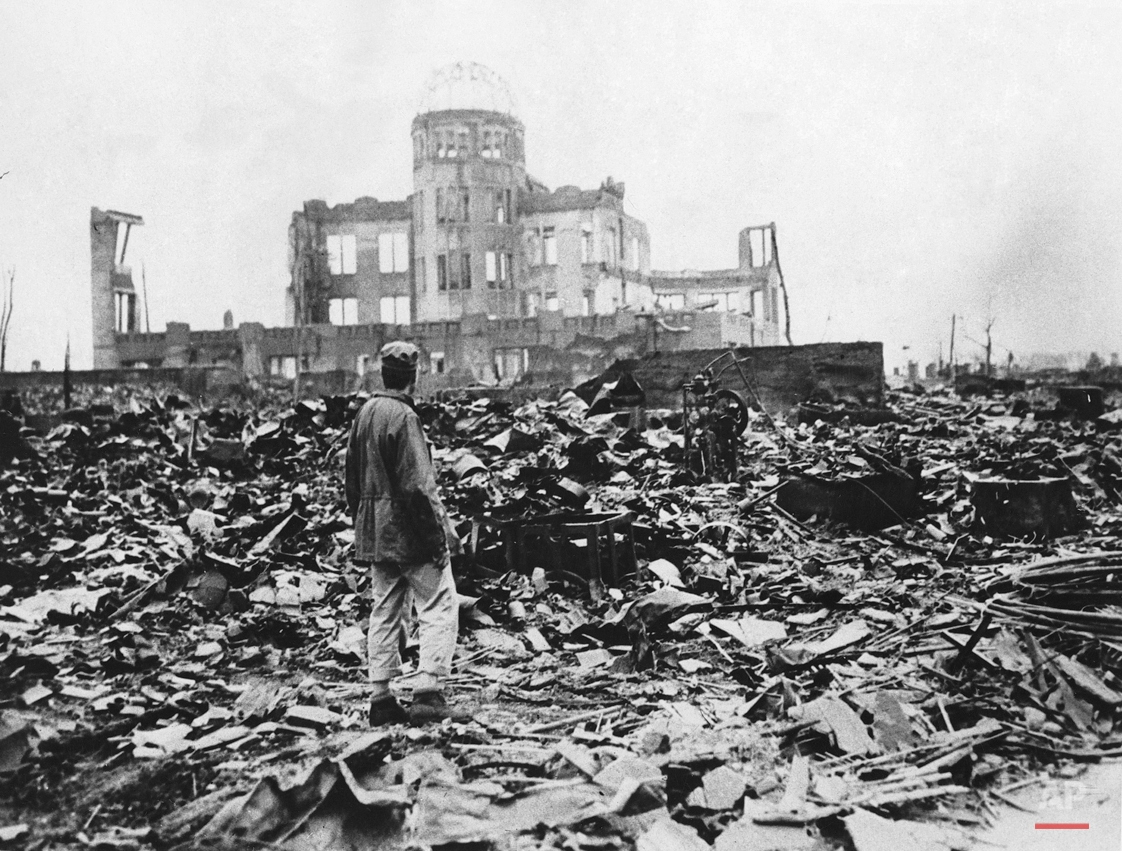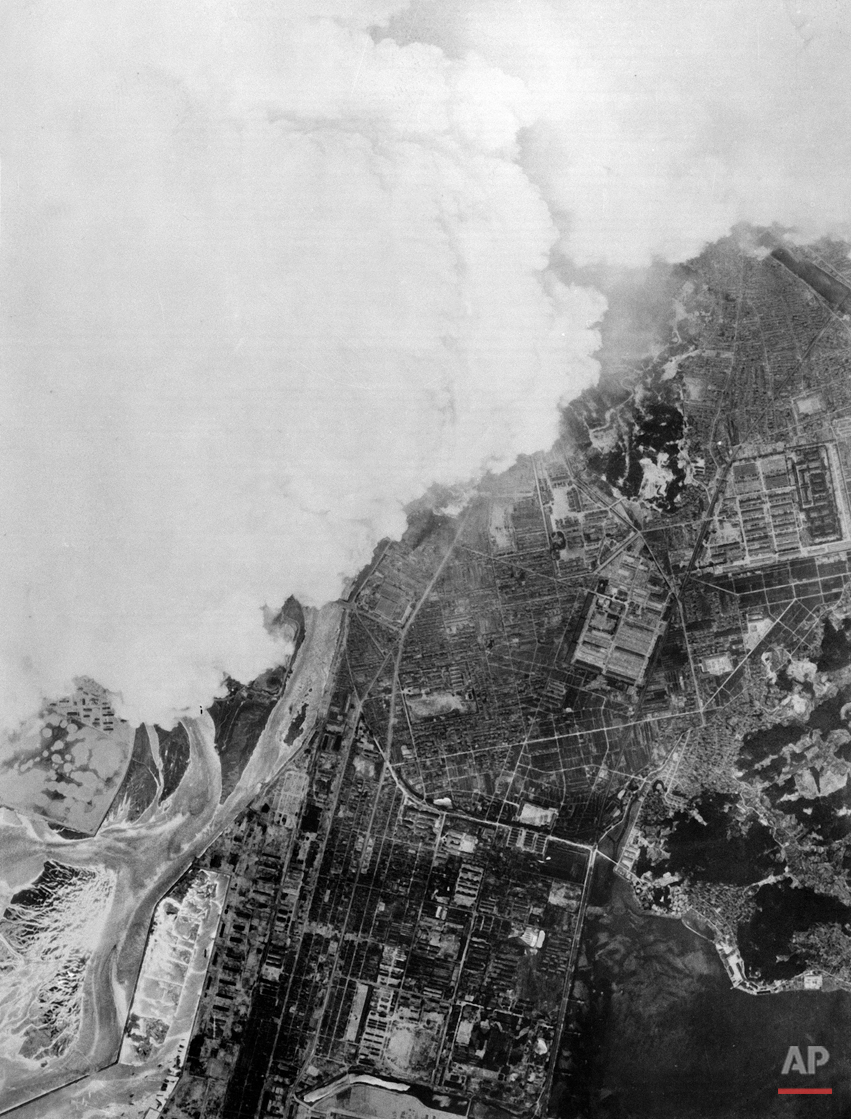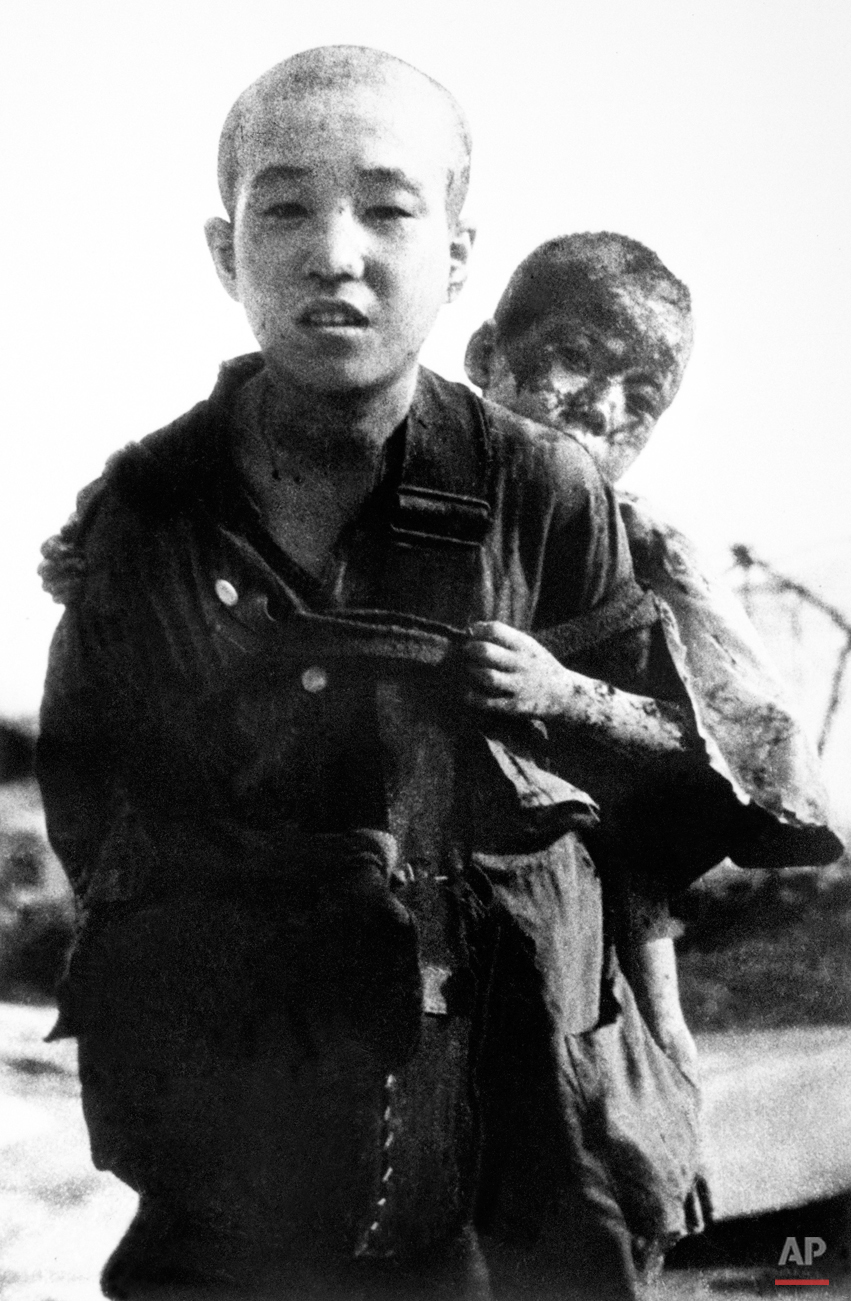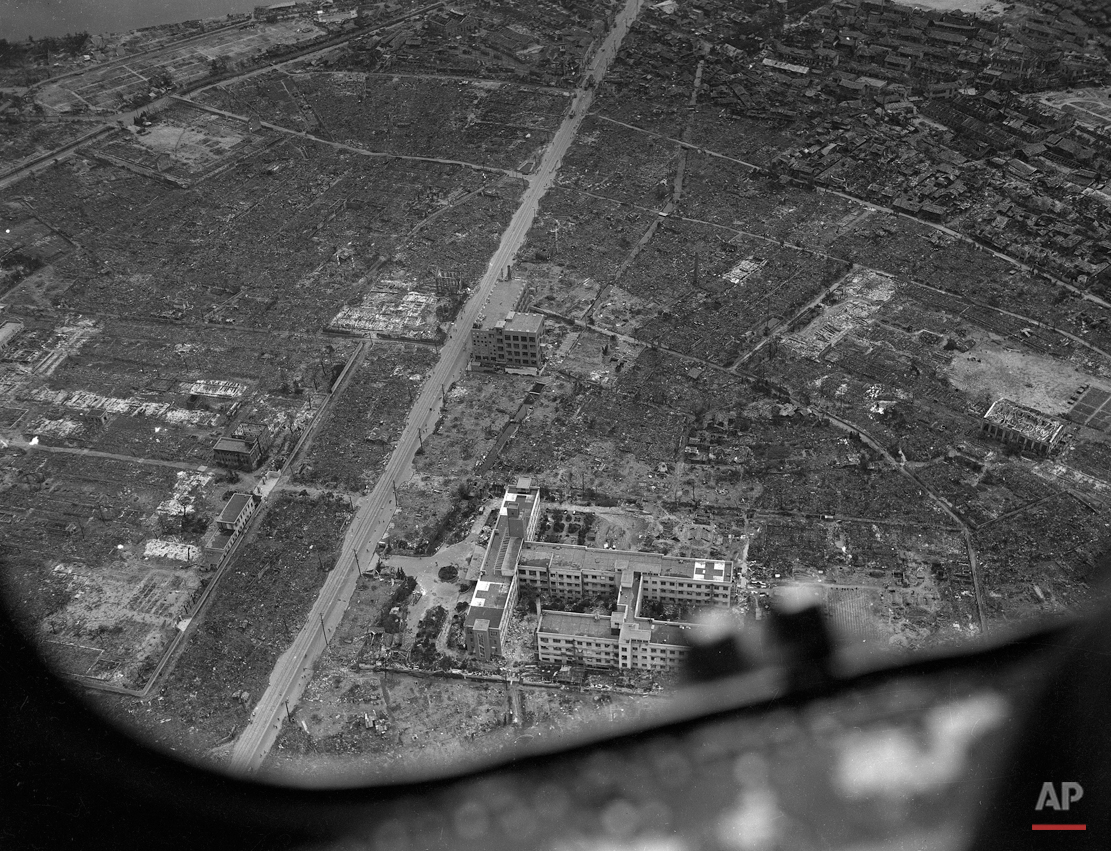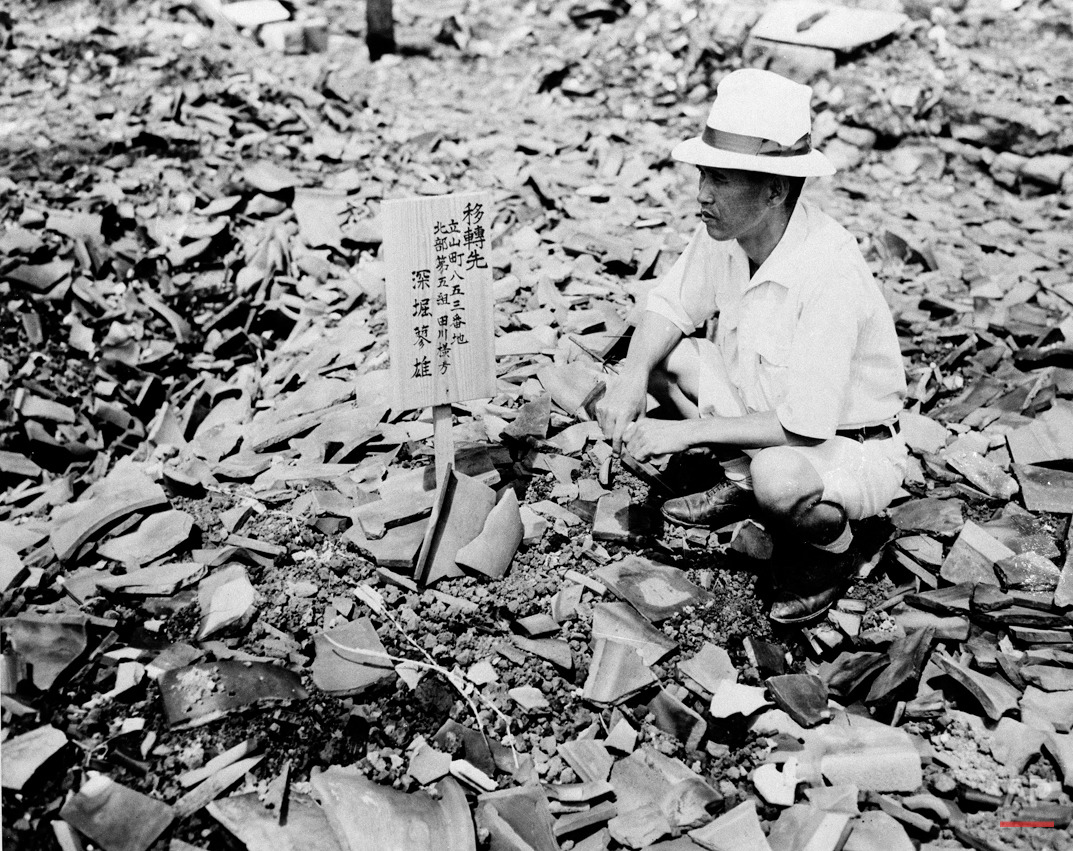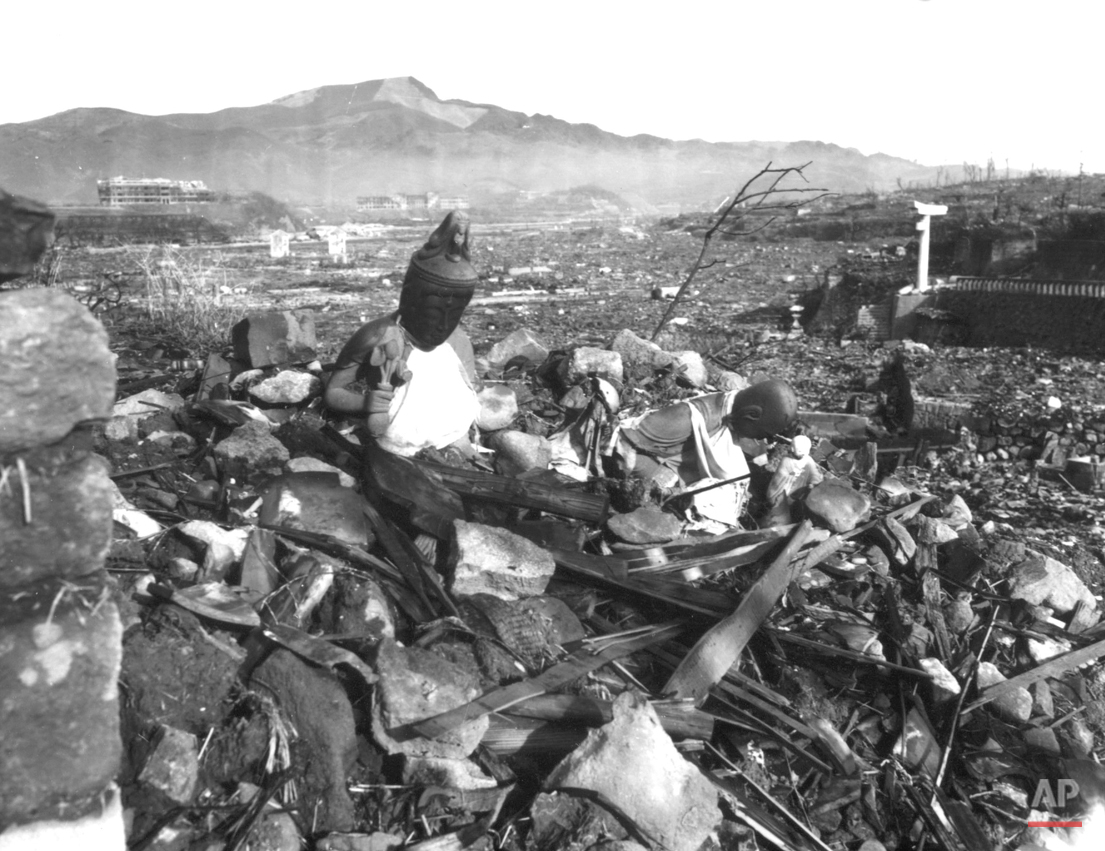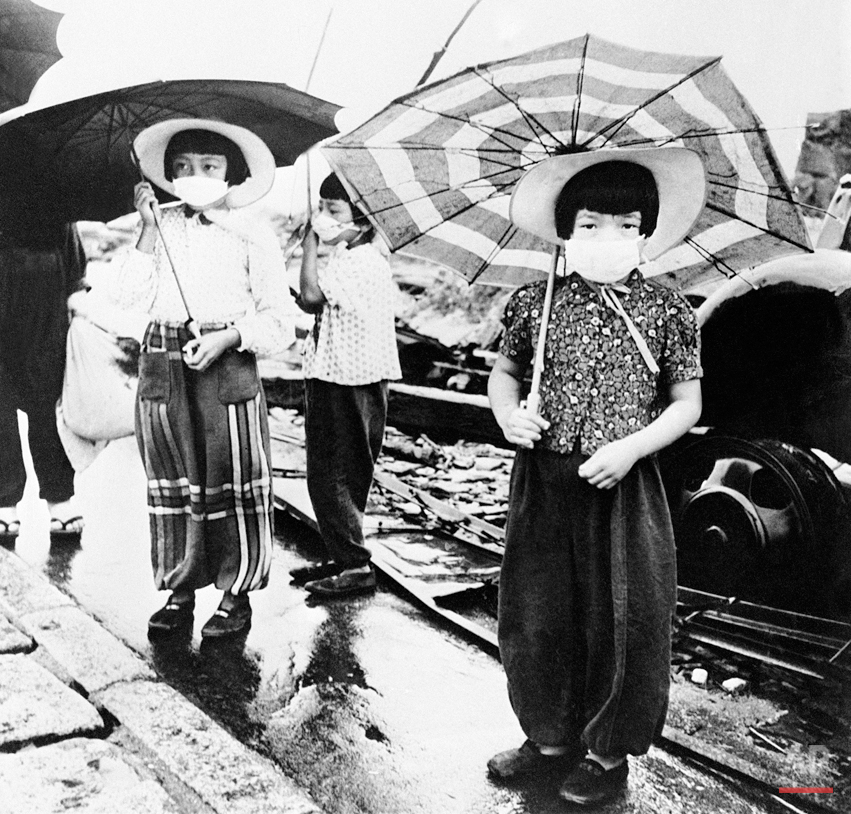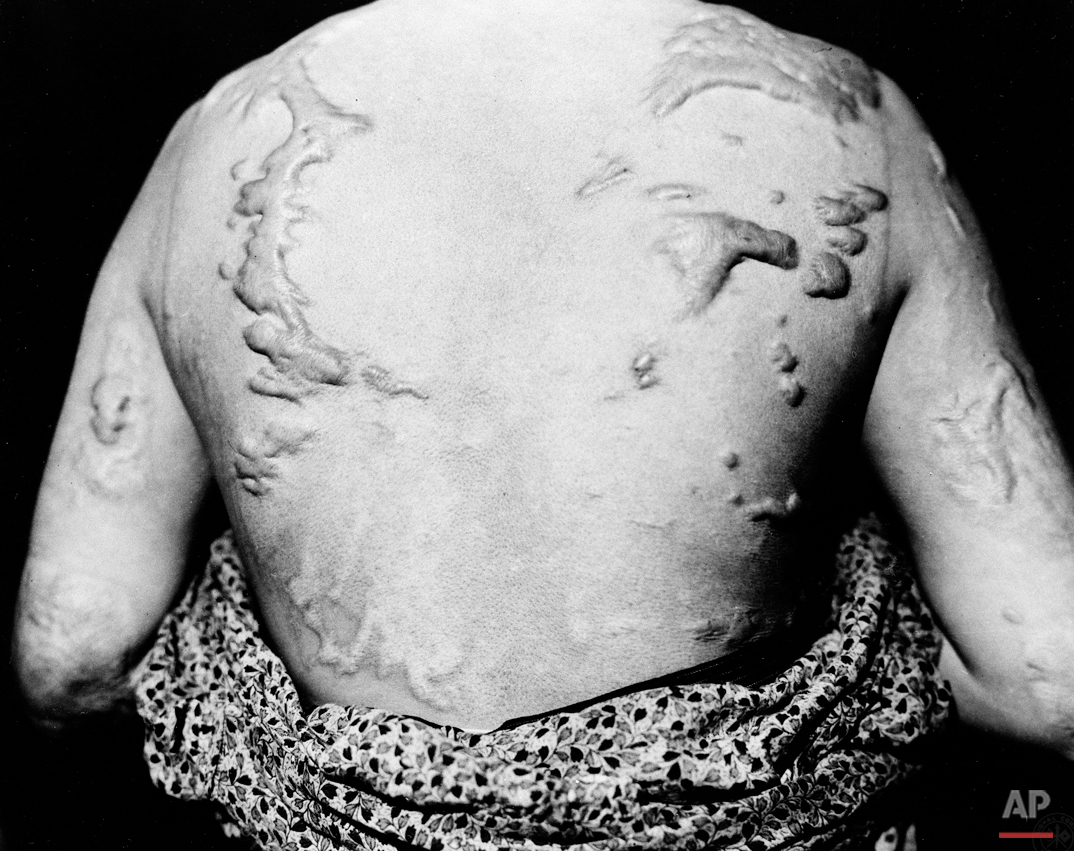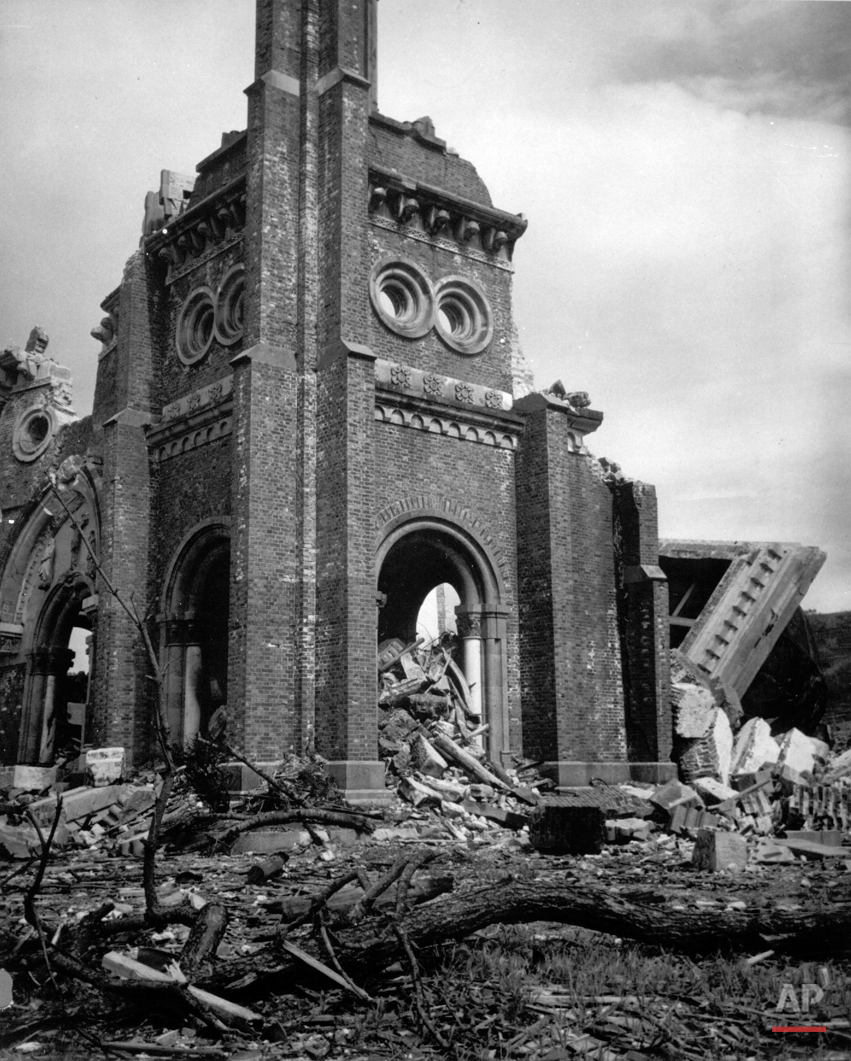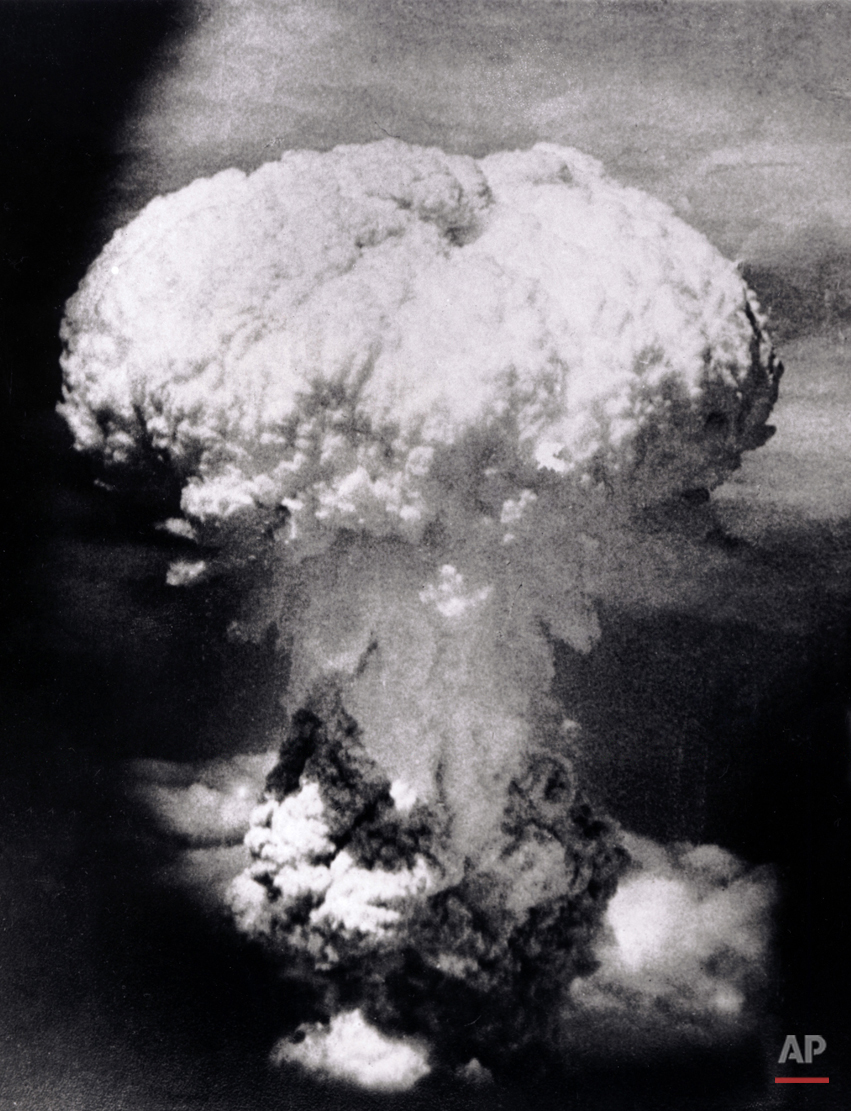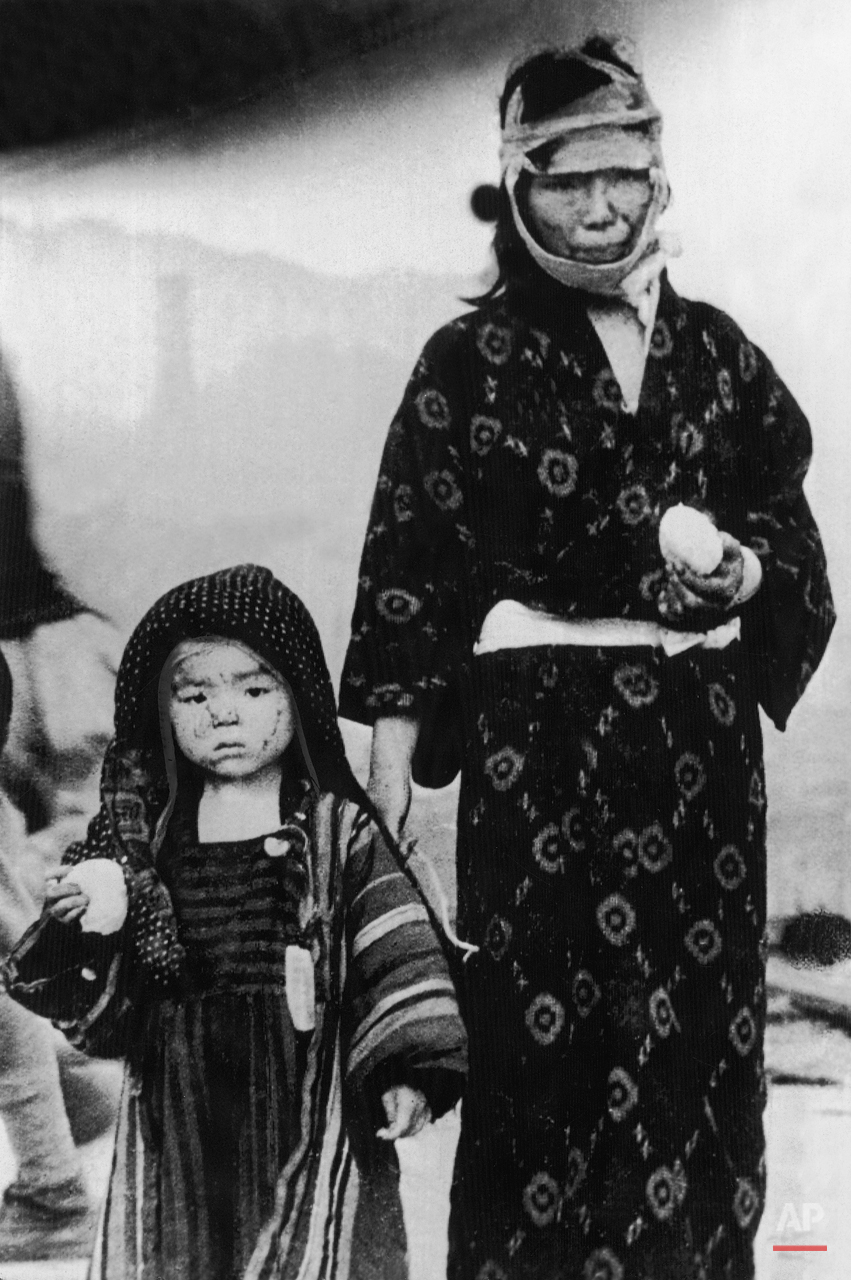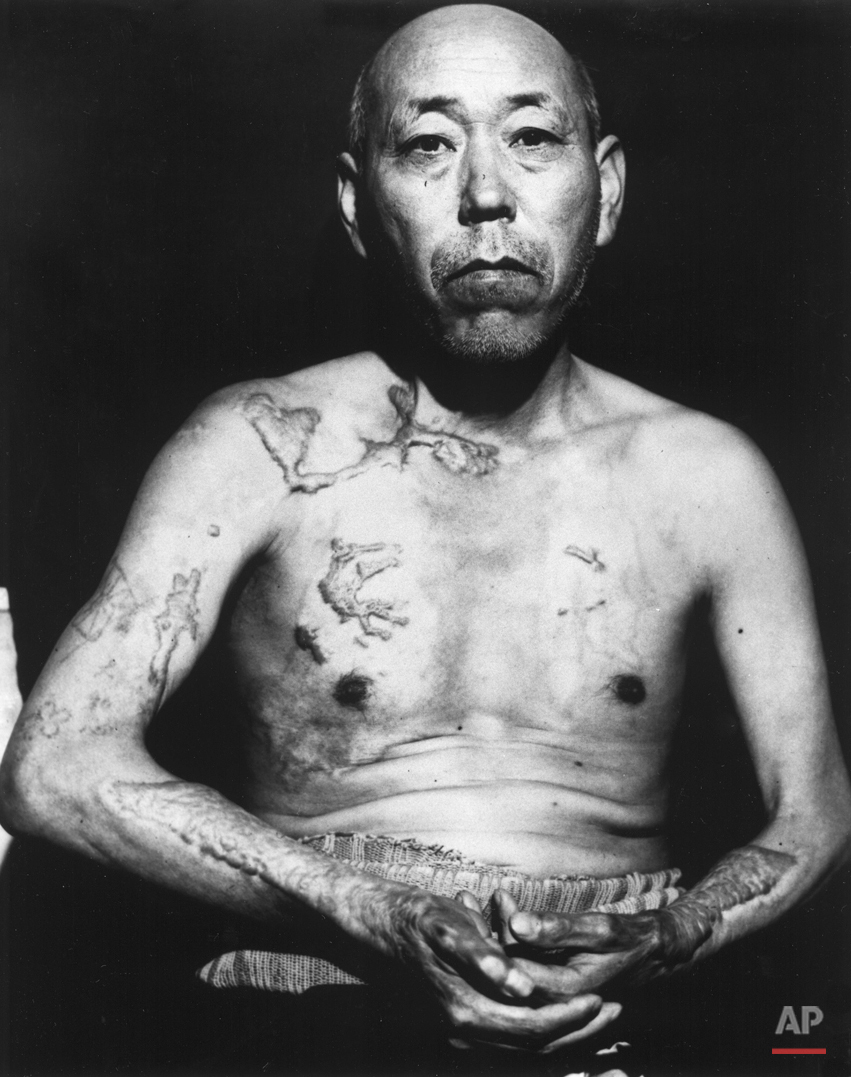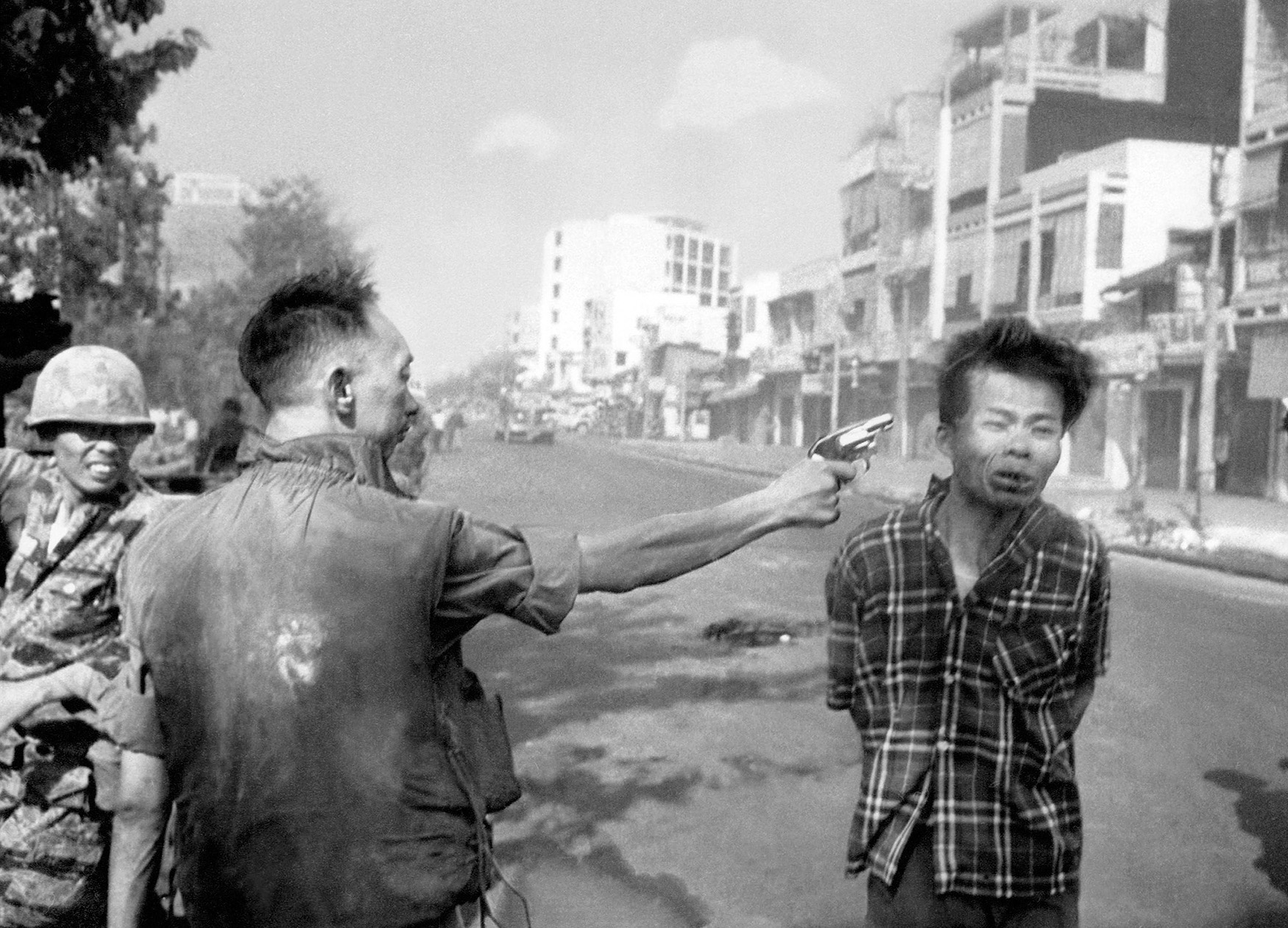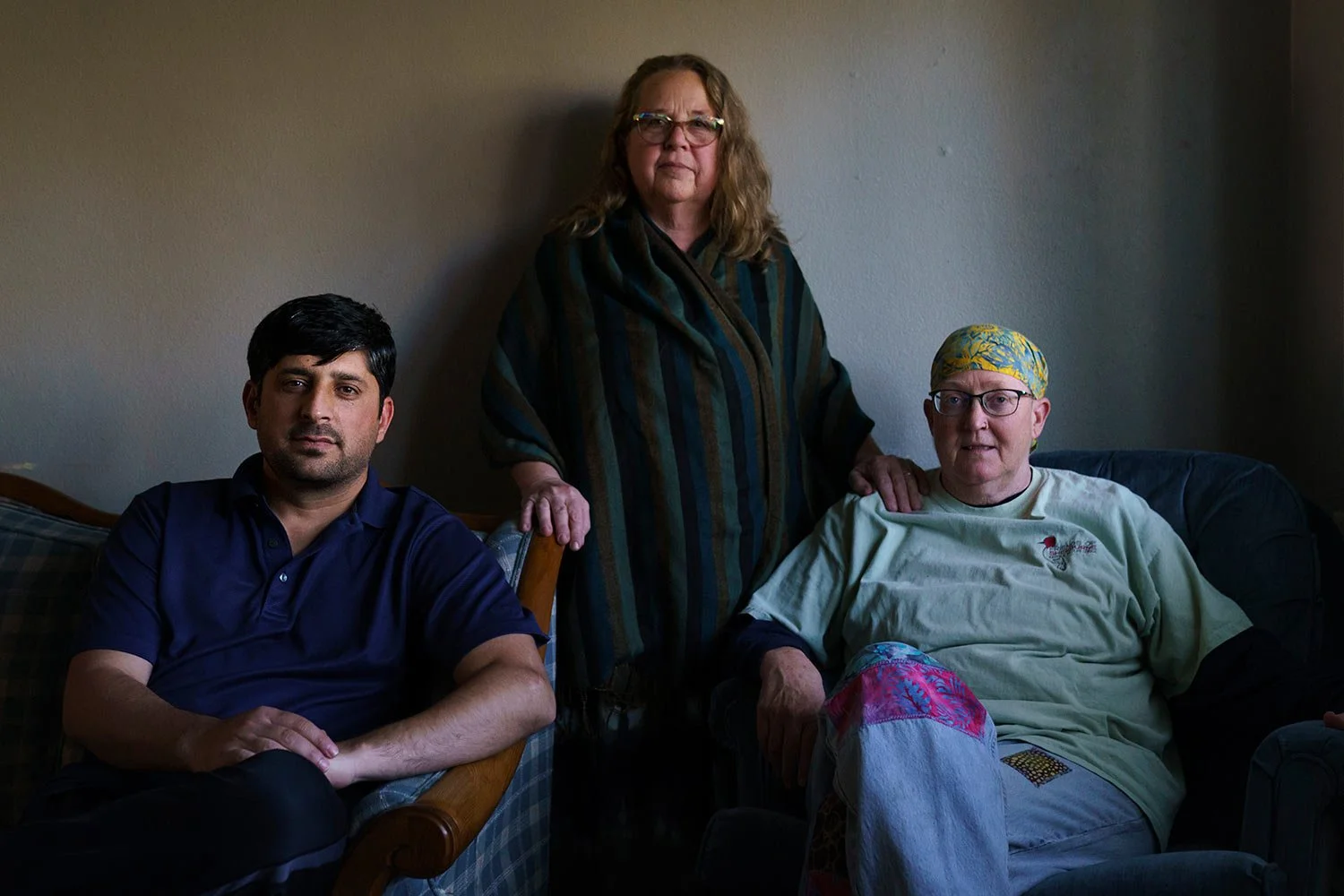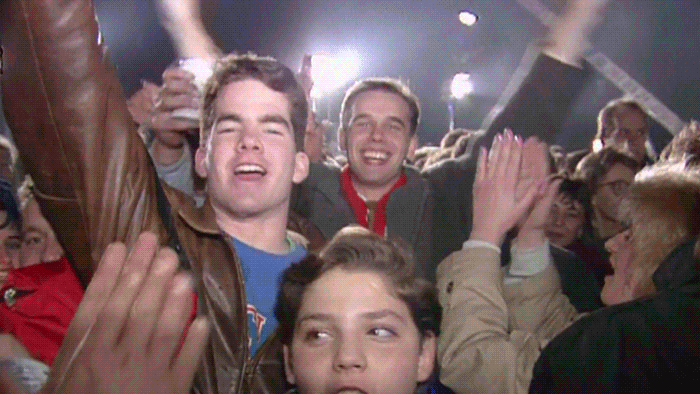AP WAS THERE: US drops atomic bombs on Japan in 1945
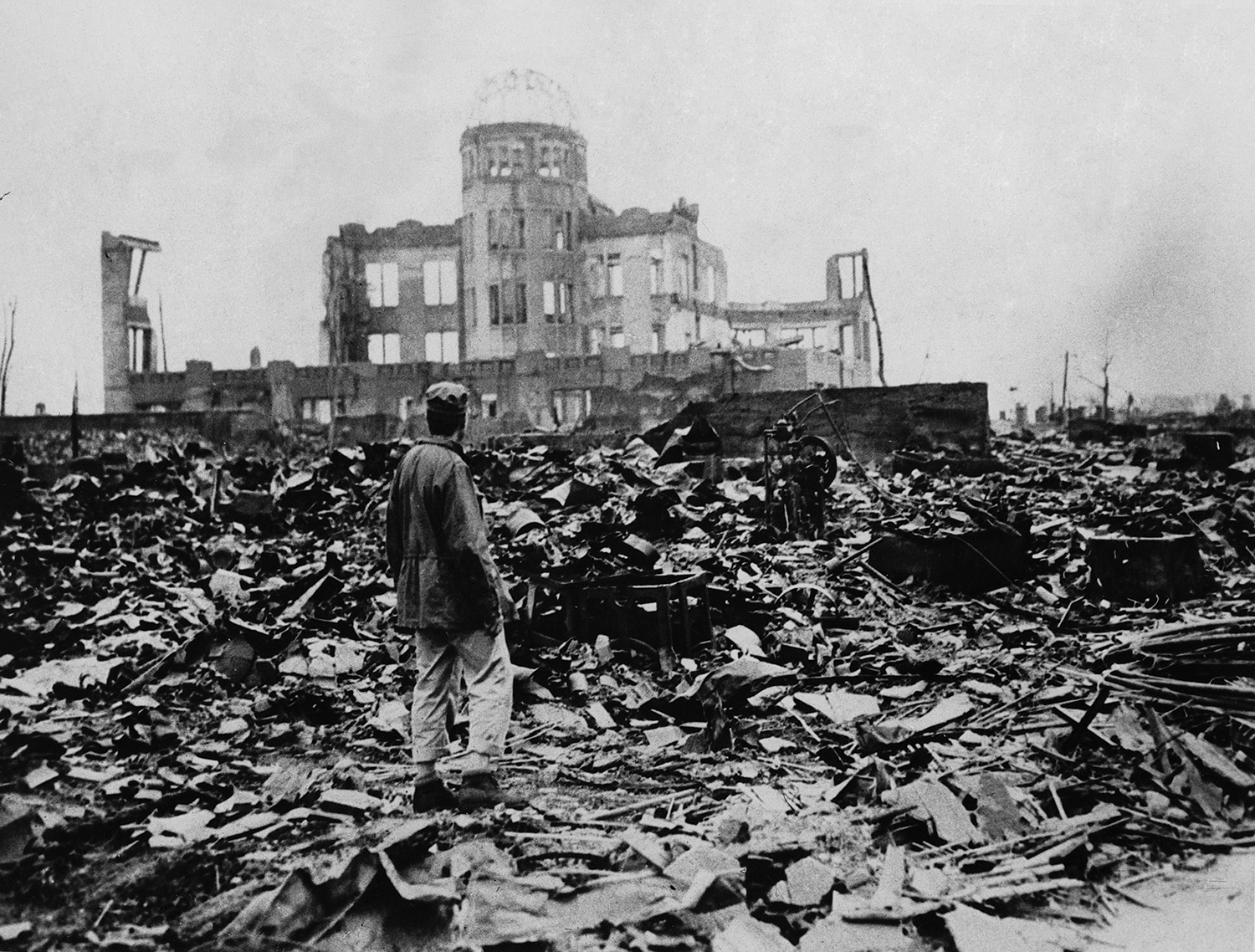
On two days in August 1945, U.S. planes dropped two atomic bombs — one on Hiroshima, one on Nagasaki, the only times nuclear weapons have been used. Their unprecedented destructive power incinerated buildings and people and left lifelong physical and psychological scars on survivors and on the cities themselves. "Practically all living things, human and animal, were literally seared to death," an AP story reported. A few days later, Japan announced its unconditional surrender. World War II was effectively over. Seventy years later, the AP is making stories about the bombings and surrender available, along with photos.
WASHINGTON, AUG. 6. — An atomic bomb, hailed as the most terrible destructive force in history and as the greatest achievement of organized science, has been loosed upon Japan.
President (Harry) Truman disclosed in a White House statement at 11 a.m. Eastern War Time, today that the first use of the bomb — containing more power than 20,000 tons of TNT and producing more than 2,000 times the blast of the most powerful bomb ever dropped before — was made 16 hours earlier on Hiroshima, a Japanese army base.
(Tokyo Radio announced that Hiroshima was raided at 8:20 a.m. Monday (7:20 p.m. Sunday, United States Eastern War Time). That is about the time the bomb was dropped, but the Tokyo broadcast, recorded by the FCC, made no mention of any unusual destruction. It reported only that "a small number" of American B-29s attacked the city on southwestern Honshu with incendiary and explosive bombs.)
The raid on Hiroshima, located on Honshu Island on the shores of the Inland Sea, had not been disclosed previously although the 25th Air Force on Guam announced that 580 Superforts raided four Japanese cities at about the same time.
The atomic bomb is the answer, President Truman said, to Japan's refusal to surrender. Secretary of War (Henry) Stimson predicted the bomb will prove a tremendous aid in shortening the Japanese war. Mr. Truman grimly warned that "even more powerful forms (of the bomb) are in development."
"If they do not now accept our terms, they may expect a rain of ruin from the air the like of which has never been seen on this earth," he said.
The War Department reported that "an impenetrable cloud of dust and smoke" cloaked Hiroshima after the bomb exploded. It was impossible to make an immediate assessment of the damage.
President Truman said he would recommend that Congress consider establishing a commission to control production of atomic power within the United States.
"I shall make recommendations to Congress as to how atomic power can become a powerful and forceful influence towards the maintenance of world peace," he said. Both Mr. Truman and Stimson, while emphasizing the peace-time potentiality of the new force, made clear that much research must be undertaken to effect full peacetime application of its principles.
The product of $2,000,000,000 spent in research and production, the atomic bomb has been one of the most closely guarded secrets of the war. Franklin D. Roosevelt and Winston Churchill gave the signal to start work on harnessing the forces of the atom. Mr. Truman said the Germans worked feverishly, but failed to solve the problem.
Meantime, American and British scientists studied the problem and developed two principal plants and some lesser factories for the production of atomic power.
The president disclosed that more than 65,000 persons now are working in great secrecy in these plants, adding: "We have spent $2,000,000,000 on the greatest scientific gamble in history — and won. We are now prepared to obliterate more rapidly and completely every productive enterprise the Japs have above ground in any city. We shall completely destroy Japan's power to make war."
The President noted that the Big Three ultimatum issued on July 26 at Potsdam was intended "to spare the Japanese people from utter destruction," and the Japanese leaders rejected it. The atomic bomb now is the answer to that rejection, and the President said: 'They may expect a rain of ruin from the air, the like of which has never been seen on this earth."
Mr. Truman forecast that sea and land forces will follow up this air attack in such numbers and power as the Japanese never have witnessed. The President said that this discovery may open the way for an entirely new concept of force and power. The actual harnessing of atomic energy may in the future supplement the power that now comes from coal, oil and the great dams, he said.
"It has never been the habit of the scientists of this country or the policy of this government to withhold from the world scientific knowledge," Mr. Truman said. "Normally, therefore, everything about the work with atomic energy would be made public."
That will have to wait, however, he said, until the war emergency is over.
Text from the AP news story, AP WAS THERE: US drops atomic bombs on Japan in 1945.
Spotlight is the blog of AP Images, the world’s largest collection of historical and contemporary photos. AP Images provides instant access to AP’s iconic photos and adds new content every minute of every day from every corner of the world, making it an essential source of photos and graphics for professional image buyers and commercial customers. Whether your needs are for editorial, commercial, or personal use, AP Images has the content and the expert sales team to fulfill your image requirements. Visit apimages.com to learn more.
Written content on this site is not created by the editorial department of AP, unless otherwise noted.
AP Images on Twitter | AP Images on Facebook | AP Images on Instagram
Visual artist and Digital Storyteller at The Associated Press


